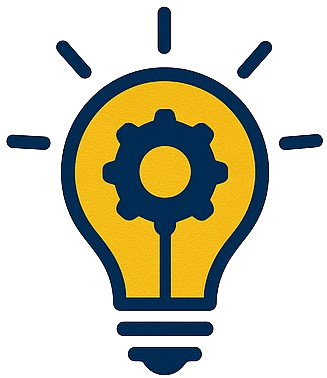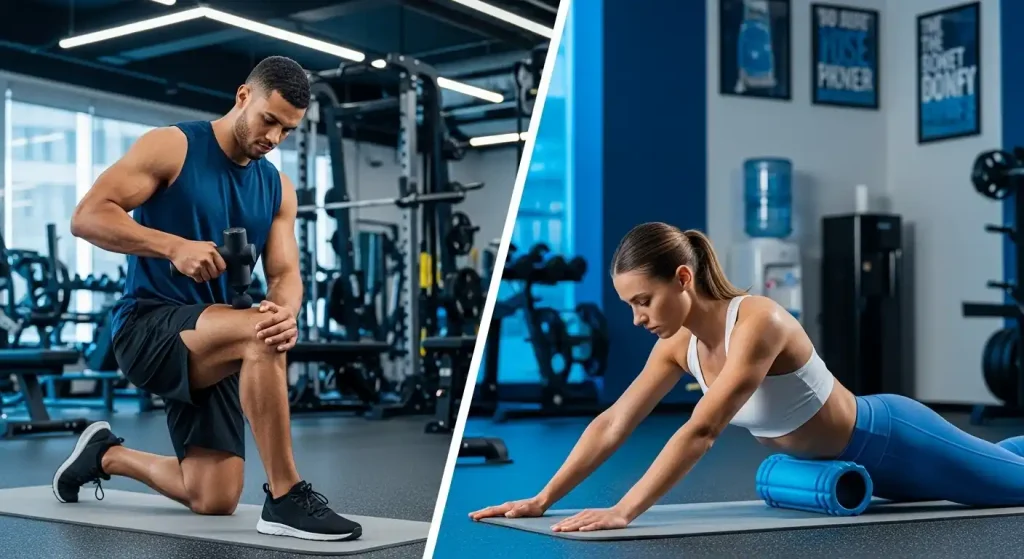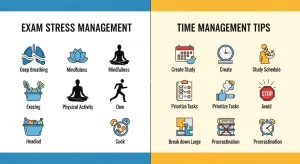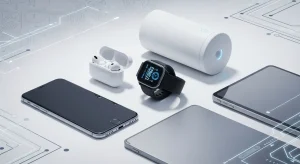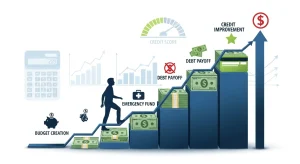In the world of fitness and athletics, recovery gear has become just as important as the workout itself. Whether you’re a weekend warrior or a professional athlete, choosing between massage guns and foam rollers can significantly impact your performance and recovery time. With the explosion of recovery tools in 2025, understanding which equipment delivers the best results is crucial for optimizing your training regimen.
Recent research shows that massage guns can be used as an alternative to foam rollers for self-myofascial release, with benefits including decreased stress, pain, and tissue tension, plus enhanced recovery and blood circulation. But which recovery method truly reigns supreme for your specific needs?
This comprehensive guide will explore the science-backed benefits of both massage guns and foam rollers, helping you make an informed decision about the best recovery gear for your fitness journey.
Medical Robotics: Transforming Healthcare with Precision
Understanding Recovery Gear and Its Importance
Recovery gear encompasses specialized equipment designed to enhance muscle recovery, reduce soreness, and improve overall athletic performance. The two most popular categories of recovery tools are massage guns and foam rollers, each offering unique mechanisms for addressing muscle tension and promoting faster healing.
Modern workout recovery isn’t just about rest days anymore. Strategic use of recovery equipment can:
- Accelerate muscle repair and regeneration
- Improve blood flow and circulation
- Reduce delayed onset muscle soreness (DOMS)
- Enhance flexibility and range of motion
- Prevent injury and improve long-term performance
Massage Guns: The High-Tech Recovery Revolution
Massage guns have revolutionized the recovery gear landscape with their percussive therapy technology. These handheld devices deliver rapid, concentrated pulses to muscle tissue, penetrating deeper than traditional massage techniques.
How Massage Guns Work
Massage guns provide targeted, percussive therapy for precise relief, making them ideal for localized, deep muscle tension. The device’s motor generates rapid vibrations that:
- Stimulate blood flow to targeted areas
- Break up muscle knots and adhesions
- Reduce inflammation through improved circulation
- Activate the nervous system’s pain-gate mechanism
- Promote faster metabolic waste removal
Top Massage Gun Benefits for Recovery
1. Precision Targeting Unlike broader recovery tools, massage guns allow you to focus on specific problem areas with surgical precision. Whether it’s a tight IT band or knotted shoulders, you can adjust intensity and angle for optimal results.
2. Variable Intensity Control Most modern massage guns offer multiple speed settings and interchangeable heads, allowing customization based on:
- Muscle group size and sensitivity
- Recovery phase (pre or post-workout)
- Individual pain tolerance
- Specific therapeutic needs
3. Time Efficiency A percussion massager is great if you regularly struggle with sore shoulders or a tense lower back, offering quick targeted relief. Most massage gun sessions require only 2-3 minutes per muscle group, making them perfect for busy schedules.
4. Enhanced Mobility The portable nature of massage guns means you can use them anywhere – at the gym, office, or while traveling. This accessibility ensures consistent recovery habits regardless of location.
Health-Tracking Wearables: Revolutionizing Personal Wellness
Best Massage Gun Features to Consider
| Feature | Benefit | Ideal For |
|---|---|---|
| Amplitude (10-16mm) | Deeper muscle penetration | Large muscle groups |
| Battery Life (2-6 hours) | Extended use sessions | Frequent users |
| Noise Level (<50dB) | Discreet operation | Shared spaces |
| Multiple Heads | Targeted therapy options | Various muscle groups |
| Speed Settings (5-30 levels) | Customizable intensity | All experience levels |
Foam Rollers: The Proven Recovery Foundation
Foam rollers remain the cornerstone of recovery gear for good reason. These simple yet effective recovery tools have decades of research supporting their benefits for muscle health and performance enhancement.
The Science Behind Foam Rolling
Foam rolling uses body weight to apply pressure across larger muscle groups, promoting myofascial release and improving overall mobility. This self-massage technique works through several mechanisms:
- Myofascial Release: Breaking down adhesions in the fascia surrounding muscles
- Increased Flexibility: Improving range of motion through tissue manipulation
- Pain Reduction: Stimulating pressure receptors that override pain signals
- Blood Flow Enhancement: Promoting circulation through mechanical pressure
Key Foam Roller Advantages
1. Full-Body Coverage A foam roller is a good investment if you’re plagued with tight IT bands or quads, providing comprehensive muscle coverage. Foam rollers excel at treating large muscle groups efficiently, making them ideal for:
- IT band release
- Quadriceps and hamstring mobility
- Back tension relief
- Calf muscle maintenance
2. Cost-Effectiveness Compared to other recovery gear, foam rollers offer exceptional value. A quality foam roller can last years with minimal maintenance, providing unlimited recovery sessions without ongoing costs.
3. Versatility and Durability Modern foam rollers come in various densities and textures:
- Smooth rollers: Gentle pressure for beginners
- Textured rollers: Deeper tissue work for experienced users
- Vibrating rollers: Combining traditional rolling with vibration therapy
- Hollow rollers: Lightweight and travel-friendly
4. Learning Curve Benefits Foam rollers teach proper body mechanics and pressure application, developing awareness of muscle tension patterns and recovery needs over time.
Biohacking and Supplements for Peak Performance
Massage Guns vs Foam Rollers: Direct Comparison
Effectiveness for Different Recovery Goals
For Targeted Pain Relief:
- Winner: Massage Guns
- Why: Precise pressure application and variable intensity settings make massage guns superior for addressing specific problem areas and trigger points.
For Overall Mobility:
- Winner: Foam Rollers
- Why: The rolling motion and body weight application provide comprehensive coverage for large muscle groups and fascial release.
For Post-Workout Recovery:
- Winner: Both (Different Applications)
- Massage guns: Immediate relief and circulation boost
- Foam rollers: Comprehensive muscle maintenance and flexibility work
For Pre-Workout Preparation:
- Winner: Massage Guns
- Why: Quick activation and warming without the time commitment required for effective foam rolling.
User Experience and Practicality
Ease of Use:
- Massage Guns: Intuitive operation, minimal technique required
- Foam Rollers: Learning curve for proper form and pressure application
Portability:
- Massage Guns: Compact, battery-powered, airplane-friendly
- Foam Rollers: Bulkier but no power requirements
Maintenance:
- Massage Guns: Battery charging, occasional cleaning
- Foam Rollers: Virtually maintenance-free
Setting Up an Effective Home Gym: Complete 2025 Guide
Building Your Complete Recovery Gear Arsenal
The Synergistic Approach
Rather than choosing between massage guns and foam rollers, many athletes discover that combining both recovery tools provides optimal results. Here’s how to integrate both effectively:
Pre-Workout Protocol (5-10 minutes):
- Massage gun warm-up: 30 seconds per major muscle group
- Dynamic stretching routine
- Light foam rolling for problematic areas
Post-Workout Protocol (10-15 minutes):
- Cool-down walk or light cardio
- Foam rolling session: 2-3 minutes per muscle group
- Massage gun spot treatment for tight areas
- Static stretching routine
Recovery Gear Investment Strategy
Beginner Budget ($50-100):
- Quality basic foam roller (medium density)
- Focus on technique development and consistency
Intermediate Setup ($100-300):
- Textured or vibrating foam roller
- Entry-level massage gun with basic attachments
- Begin experimenting with combined protocols
Advanced Arsenal ($300-600+):
- Professional-grade massage gun with multiple heads
- Multiple foam roller types (varying densities)
- Specialized recovery tools (lacrosse balls, massage sticks)
Top Fitness Trackers & Smartwatches 2025: Ultimate Guide
Optimizing Your Recovery Routine
Best Practices for Massage Gun Use
Proper Technique Guidelines:
- Start with lowest intensity setting
- Move slowly across muscle fibers (1 inch per second)
- Avoid bony areas and joints
- Limit sessions to 2-3 minutes per muscle group
- Stay hydrated before and after use
Safety Considerations:
- Never use on injuries or inflamed areas
- Avoid over-treating (can cause tissue damage)
- Consult healthcare providers for chronic pain issues
- Stop immediately if experiencing increased pain
Foam Rolling Best Practices
Effective Rolling Technique:
- Roll slowly and deliberately
- Focus on tender spots for 30-60 seconds
- Breathe deeply and relax during treatment
- Maintain proper body alignment
- Progress gradually from gentle to firm pressure
Common Mistakes to Avoid:
- Rolling too quickly
- Applying excessive pressure initially
- Ignoring pain signals
- Neglecting smaller muscle groups
- Inconsistent routine adherence
Wearable Health Trackers for Daily Wellness
FAQ Section
Which is better for muscle recovery: massage guns or foam rollers?
Both massage guns and foam rollers are excellent recovery tools, but they serve different purposes. Massage guns excel at targeted relief and quick activation, making them ideal for specific problem areas and pre-workout preparation. Foam rollers provide comprehensive muscle recovery across larger areas and are better for overall mobility and post-workout maintenance. The most effective approach combines both recovery gear types for optimal results.
How often should I use massage guns and foam rollers for recovery?
For massage guns, limit use to 2-3 minutes per muscle group, up to twice daily (pre and post-workout). Foam rollers can be used more frequently – daily rolling sessions of 10-15 minutes are safe and beneficial for most people. Listen to your body and adjust frequency based on training intensity, muscle soreness, and individual recovery needs. Consistency with your recovery gear routine is more important than frequency.
Are massage guns worth the extra cost compared to foam rollers?
Massage guns typically cost 5-10 times more than foam rollers, but they offer unique benefits that justify the investment for many users. If you have specific problem areas, limited time for recovery, or need portable recovery tools, massage guns provide excellent value. However, foam rollers remain the most cost-effective recovery gear for comprehensive muscle maintenance. Consider your budget, recovery goals, and usage patterns when choosing between these recovery tools.
Can I use massage guns and foam rollers if I have injuries?
Both massage guns and foam rollers can be beneficial for certain conditions, but you should always consult healthcare professionals before using recovery gear on injured areas. Generally, avoid using these recovery tools directly on acute injuries, inflammation, or areas of significant pain. For chronic conditions or during rehabilitation, these recovery tools may help when used properly under professional guidance.
What’s the difference between cheap and expensive recovery gear?
Quality recovery gear offers superior durability, performance, and safety features. Expensive massage guns typically provide better battery life, quieter operation, more intensity levels, and higher build quality. Premium foam rollers feature better materials, more effective textures, and longer lifespans. While budget recovery tools can be effective, investing in quality recovery gear often provides better long-term value and results.
Intermittent Fasting 101: Benefits and Tips
The Future of Recovery Gear Technology
The recovery gear industry continues evolving with exciting innovations on the horizon:
Emerging Technologies
Smart Recovery Tools:
- App-connected devices with guided routines
- Biometric feedback integration
- AI-powered personalization based on recovery data
Advanced Materials:
- Temperature-regulating foam technologies
- Antimicrobial surface treatments
- Eco-friendly, sustainable materials
Hybrid Solutions:
- Combination massage gun and foam roller devices
- Modular systems for customized therapy
- Integration with wearable fitness technology
5 Easy Healthy Breakfast Ideas for Busy Mornings
Conclusion: Your Path to Enhanced Recovery
Choosing the right recovery gear doesn’t have to be an either-or decision between massage guns and foam rollers. Both recovery tools offer unique advantages that complement each other perfectly in a comprehensive recovery strategy.
Foam rollers provide the foundation – affordable, versatile, and proven effective for overall muscle maintenance and mobility. Massage guns add precision and convenience, targeting specific issues with professional-grade percussive therapy.
The best recovery gear investment is the one you’ll use consistently. Whether you start with a basic foam roller or dive into high-tech massage gun therapy, establishing a regular recovery routine will dramatically improve your performance, reduce injury risk, and enhance your overall fitness journey.
Remember, recovery gear is only as effective as your commitment to using it. Start with the basics, build consistency, and gradually expand your recovery tools arsenal as your needs and budget allow.
Ready to upgrade your recovery game?
Transform your post-workout routine with our curated selection of premium massage guns and foam rollers. Get 30% off top-rated recovery gear and free shipping on orders over $100.
– Your muscles will thank you tomorrow.
